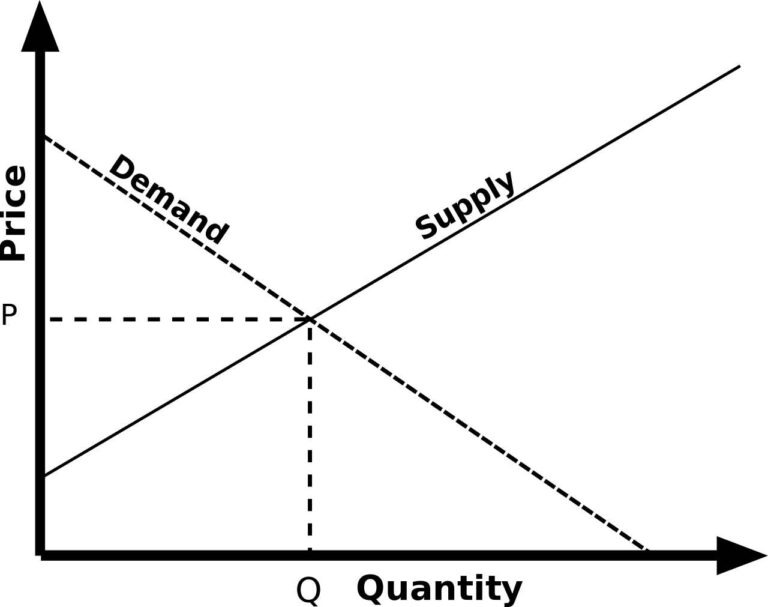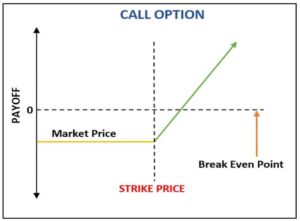Supply and demand: Definition and all that you need to know

Supply and demand is a fundamental principle of economics that explains how prices for goods and services are determined. This article will explore the basic concepts of supply and demand, how they interact, and the impact they have on the economy as a whole. By understanding supply and demand, individuals and businesses can make informed decisions about production, consumption, and pricing.
Definition of Supply and Demand
Supply and demand is the basic principle of economics that explains the interaction between the quantity of a good or service available for sale and the quantity that consumers are willing and able to buy.
Supply refers to the amount of a good or service that a producer can offer for sale at a given price. Many factors, including production costs, technology, and the availability of raw materials, determine the supply of a good or service.
Demand, on the other hand, is the amount of a good or service that consumers are willing and able to purchase at a given price. A variety of factors, including consumer income, consumer preferences, and the availability of substitute goods or services influence the demand for a good or service.
The interaction between supply and demand determines the market price of a good or service, as well as the quantity that is produced and consumed. If the quantity of a good or service that is supplied exceeds the quantity demanded, the market is said to be in surplus, and prices may fall. Conversely, if the quantity demanded exceeds the quantity supplied, the market is said to be in shortage, and prices may rise.
Relationship between Supply and Demand
The relationship between supply and demand is crucial in determining the market price of a good or service. The interaction between the quantity supplied and the quantity demanded creates the market price, which is the point where the two curves intersect. This point of intersection is called the equilibrium price, and it represents the price at which the quantity supplied is equal to the quantity demanded.
Mathematically, the relationship between supply and demand can be represented by the following formula:
Qd = Qs
Where;
Qd represents the quantity demanded and
Qs represents the quantity supplied.
When the price of a good or service is high, the quantity demanded decreases while the quantity supplied increases, creating a surplus in the market. Conversely, when the price of a good or service is low, the quantity demanded increases, while the quantity supplied decreases, creating a shortage in the market.
The market’s movement toward the equilibrium price occurs due to the actions of buyers and sellers in response to changes in supply and demand. If the price of a good or service is too high, some sellers will reduce the cost to sell their goods, while if the price is too low, some buyers will withdraw from the market, causing the price to rise. This continuous adjustment of prices until the market reaches its equilibrium price is known as the market clearing process.
Factors affecting supply and demand
Several factors can affect the supply and demand for a good or service, causing changes in the market price and quantity. These factors can include:
- Consumer Income: An increase in consumer income will generally lead to a rise in demand for goods and services. Conversely, a decrease in consumer income will lead to a reduction in demand.
- Consumer Preferences: Changes in consumer preferences can signify impact demand for a good or service. For example, if consumers become more health-conscious, they may shift their demand from unhealthy foods to healthier alternatives.
- Technology: Advances in technology can increase the supply of goods and services, making them more readily available and lower in cost. On the other hand, technological changes can also decrease the supply of goods and services if they become obsolete.
- Natural Disasters and Climate Changes: Natural disasters and climate changes can affect the supply of goods and services by disrupting the production process and causing price increases.
- Government Policies: Government policies can also impact the supply and demand for goods and services. For example, taxes on certain goods can increase their cost and reduce demand, while subsidies can lower the cost and increase demand.
- Availability of Substitutes: The availability of substitutes for a good or service can affect its demand. If consumers have a good replacement available, they may shift their demand away from the original good, decreasing its demand.
The interplay of these factors can have complex effects on the supply and demand for goods and services and determine the market price. Understanding these factors is essential for individuals and businesses to make informed decisions about production, consumption, and pricing.
Impact of supply and demand on prices
The impact of supply and demand on prices is a fundamental concept in economics. The market price of a good or service is determined by the interplay of the quantity supplied, and the quantity demanded. When the quantity demanded exceeds the quantity supplied, the market is said to be in shortage, causing prices to rise. Conversely, when the quantity supplied exceeds the quantity demanded, the market is in surplus, causing prices to fall.
For example, if there is an increase in demand for a certain good, but the supply remains constant, the price of the good will increase. On the other hand, if there is an increase in supply, but demand remains constant, the price of the good will decrease.
The elasticity of demand and supply also influences the impact of supply and demand on prices. If demand for a good or service is inelastic, a price change will not significantly change the quantity demanded. On the other hand, if demand is elastic, a price change will result in a significant change in the quantity demanded.
In addition to affecting the price of a good or service, changes in supply and demand can also impact the quantity produced and consumed. Producers may respond to changes in demand by increasing or decreasing production, while consumers may adjust their consumption patterns in response to price changes.
Application of supply and demand in real-world scenarios
The concept of supply and demand is widely used in real-world scenarios to make informed decisions about pricing, production, and consumption. Businesses use this concept to determine the price at which they can sell their goods and services and to plan their production accordingly. Governments use this concept to analyze the impact of taxes, subsidies, and other policies on the market for a good or service.
Individuals also apply the concept of supply and demand to make informed decisions about their consumption patterns. For example, consumers may purchase goods or services when they are in high demand and prices are low or avoid purchasing when prices are high, and demand is low.
Conclusion
The application of supply and demand is widespread in private and public sectors, providing valuable insights into market behaviour and decision-making.
Don't miss a thing. Follow us on Telegram and Follow us on WhatsApp. If you love videos then also Subscribe to our YouTube Channel. We are on Twitter as MakeMoneyDotNG.





